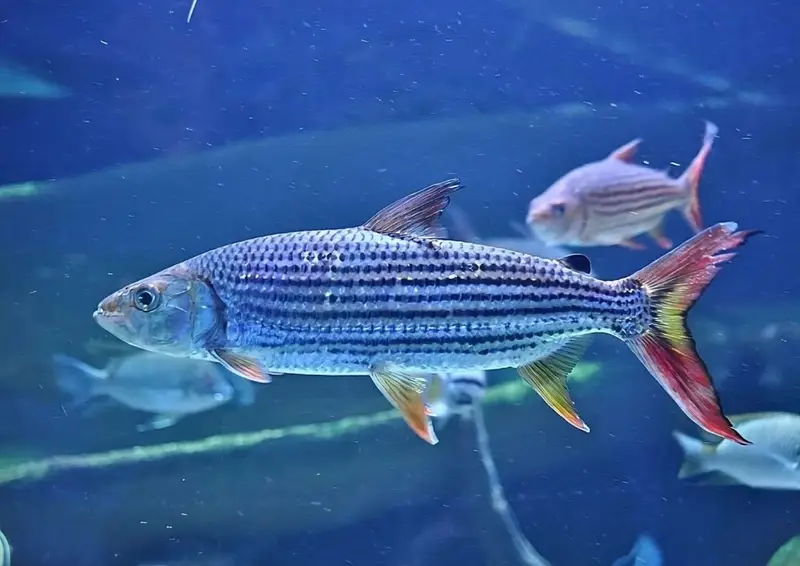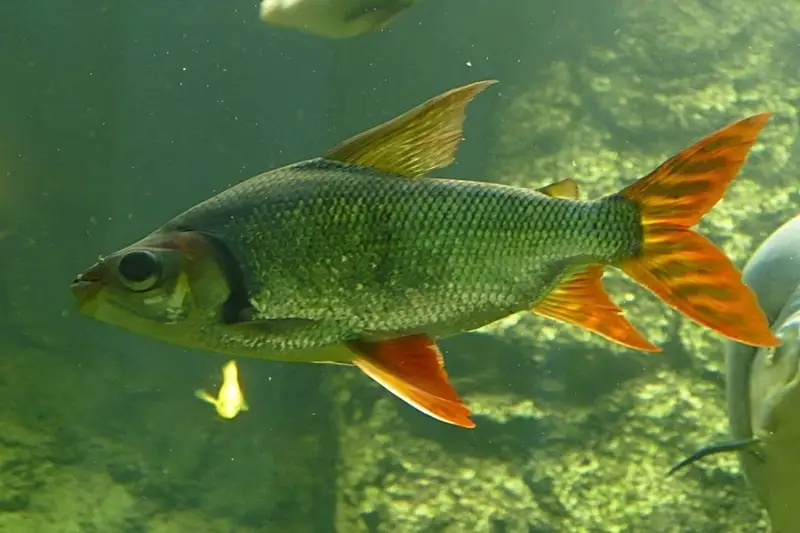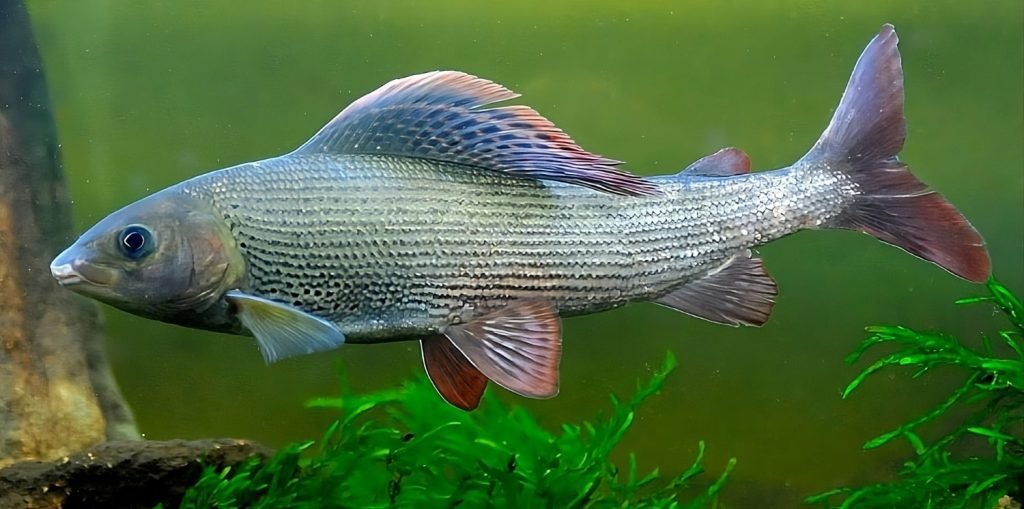Fish belong to the phylum Chordata, one of the most important and diverse in the animal kingdom. The phylum Chordata includes animals that exhibit some distinctive characteristics at some stage of their development, making them members of this group. Key features of animals belonging to the phylum Chordata include the notochord, pharyngeal cleft, dorsal nerve tube, and postanal tail.
Notochord:
- The notochord is a flexible cylindrical structure that acts as a body support in some developmental stages of animals of the phylum Chordata. In fish, the notochord is present during the embryonic stage, but is usually replaced by the vertebral column, characteristic of vertebrate animals.
Pharyngeal cleft:
- Pharyngeal clefts are openings that appear in the lateral walls of the pharynx, the throat region, during embryonic development of chordate animals. In fish, these pharyngeal clefts play an important role in the development of the gills, the structures responsible for aquatic respiration.
Dorsal nerve tube:
- The dorsal nerve tube is a hollow structure that forms the central nervous system in chordates. In fish, this nerve tube gives rise to the brain and spinal cord and is essential for controlling and coordinating body functions.
Postanal tail:
- The postanal tail is an extension of the body that extends beyond the anus at some stages of development. In fish, the postanal tail is an important feature for aquatic locomotion, as it aids in swimming and propulsion.
Fishes are a diverse group of aquatic animals that includes several classes, such as bony fishes (class Osteichthyes) and cartilaginous fishes (class Chondrichthyes). These classes include several orders and families of fish, each with specific characteristics according to their environment and lifestyle.
Fish play a crucial role in aquatic ecosystems, acting as predators, prey, and regulators of populations of other organisms. In addition, many fish species are of great economic importance to commercial and sport fisheries, as well as being prized as pets in aquariums around the world.
In summary, fish belong to the phylum Chordata, which is a diverse group of animals that share distinctive characteristics during some stage of their development. These features, such as the notochord, pharyngeal clefts, dorsal nerve tube, and postanal tail, are fundamental to identifying animals as members of the phylum Chordata, including fishes.
What is the phylum Chordata?

The phylum Chordata is one of the most important and diverse in the animal kingdom. It includes a wide variety of animals, both vertebrates and invertebrates, known as chordates. The term “Chordata” is derived from the word “chorda”, which refers to the notochord. This structure is a distinctive feature and one of the main characteristics of this group of animals.
Animals of the phylum Chordata exhibit some distinctive characteristics at some stage of their development. These characteristics make them members of this group.
The main characteristics of chordates are:
Notochord:
- The notochord is a flexible, cylindrical structure. It extends along the body axis at some stage in the development of chordate animals. The notochord acts as a support for the body and plays an important role in the coordination of movements.
Pharyngeal cleft:
- Pharyngeal clefts are openings that appear in the lateral walls of the pharynx, the throat region. These slits are characteristic of the embryonic stage of chordates and serve specific functions in different groups of animals. In fish, for example, the pharyngeal clefts give rise to the gills, the structures responsible for aquatic respiration.
Dorsal nerve tube:
- The dorsal nerve tube is a hollow structure that forms the central nervous system in chordates. This tube gives rise to the brain and spinal cord and is essential for controlling and coordinating body functions.
Postanal tail:
- The postanal tail is an extension of the body that extends beyond the anus at some point during chordate development. This tail is found in some groups of chordate animals and serves specific functions in their life.
The phylum Chordata is extremely diverse and encompasses a wide variety of animals. These range from the simplest and most primitive to the most complex and evolved. This phylum includes vertebrates such as fish, amphibians, reptiles, birds and mammals, which are animals with a well-developed backbone. In addition to vertebrates, the phylum Chordata also includes chordate invertebrates. These are the ascidians and amphioxus, which lack a vertebral column but share other distinctive features of the chordates.
Animals of the phylum Chordata play key roles in terrestrial and aquatic ecosystems. They occupy diverse roles as predators, prey, and regulators of populations of other organisms. In addition, many chordate species are of great economic, cultural and ecological importance. They are therefore fundamental to the understanding and conservation of our planet’s biodiversity.
Chordate invertebrates such as the ascidians and amphioxus

Chordate invertebrates are an interesting group of animals. They share distinctive characteristics with chordates, but unlike vertebrates, they lack a vertebral column. These animals are represented mainly by the ascidians and amphioxus. They are considered the closest invertebrates to vertebrates in terms of evolution and morphological characteristics.
Ascidians (Class Ascidiacea):
- Ascidians, also known as tunicates, are marine invertebrates belonging to the class Ascidiacea, phylum Chordata. They are sessile animals, meaning that they live attached to rocks, shells, coral reefs or other submerged surfaces. Ascidians are found in a variety of marine habitats, from shallow water to deep ocean depths.
The appearance of ascidians can vary greatly, but most have a soft body. This body is covered with a tough, gelatinous tunic, which gives the group its name. Inside this tunic are a number of organs and structures characteristic of chordates, such as the notochord, pharyngeal slits and dorsal nerve tube. However, these features are only present during the larval stage of ascidian development. Some of them are reabsorbed as it develops into its adult form.
Ascidians are efficient filter feeders that feed through their gills. These structures capture food particles suspended in the water. Some ascidian species are considered invasive and can cause problems in ecosystems where they have been introduced. Others, however, play a crucial role in water filtration and nutrient cycling.
Amphioxus (Class Cephalochordata):
- Amphioxus, also known as leaf amphioxus, are small marine invertebrates. They belong to the class Cephalochordata, phylum Chordata. They are found mainly in shallow water sediments, buried in the seafloor in places such as beaches and estuaries.
They have an elongated, translucent body, with a fish-like appearance. However, they are much simpler and more primitive in their body organization. They exhibit all the distinctive features of chordates at all stages of their life, including the notochord, pharyngeal clefts and dorsal nerve tube. These characters are retained throughout adulthood in these organisms.
Amphioxus are filter-feeding animals that feed mainly on plankton and small particles suspended in the water. They have a mouth with a considerable number of gill slits, which filter the water to obtain food.
Amphioxus play an important role in marine ecology by regulating populations of plankton and other small organisms. They also serve as environmental indicators in ecological studies.
In summary, ascidians and amphioxus are fascinating examples of chordate invertebrates. Although they lack a vertebral column, these animals share some of the most important features of chordates, such as the notochord and pharyngeal clefts. This makes them fundamental to understanding the evolution and diversity of chordates in the animal kingdom.





